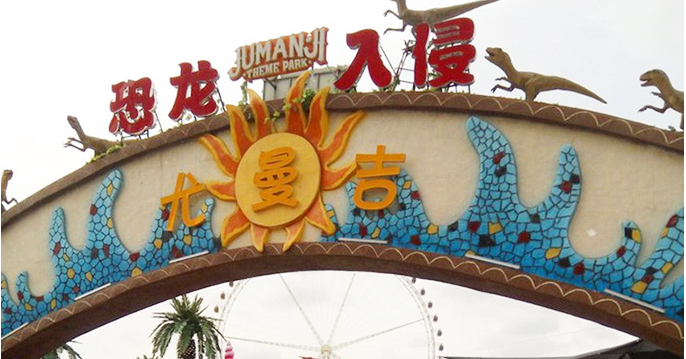- Albanian
- Arabic
- Belarusian
- Bengali
- Czech
- English
- French
- German
- Hebrew
- Hungarian
- Indonesian
- irish
- Italian
- Japanese
- kazakh
- Persian
- Russian
- Thai
- Uzbek
- Vietnamese
roller coaster engineering
The Thrilling World of Roller Coaster Engineering
Roller coasters have become one of the most exhilarating attractions in amusement parks around the world, captivating thrill-seekers and families alike. The engineering behind these gravity-defying rides is a fascinating blend of art, science, and technology. From the design phase to the actual construction and operation, roller coaster engineering encompasses a variety of disciplines, including physics, mechanics, and aesthetics.
The Design Process
The journey of a roller coaster begins with concept design. Engineers and ride designers brainstorm ideas that balance excitement, safety, and guest experience. This involves sketching initial concepts and utilizing computer-aided design (CAD) software to create detailed models. This stage also includes considerations of the coaster's layout, themes, and how it integrates with the surrounding park environment.
One of the key elements in roller coaster design is selecting the appropriate type of coaster. There are various styles, such as steel coasters, wood coasters, inverted coasters, and hybrid coasters, each offering a unique experience. Steel coasters, known for their smooth rides and complex inversions, can achieve higher speeds and tighter turns, while wooden coasters are renowned for their classic appeal and rickety charm. The choice of materials and design significantly influences the overall ride experience.
Engineering Principles
At the core of roller coaster engineering are essential principles of physics, particularly Newton's laws of motion, energy conservation, and centripetal force
. Engineers must meticulously calculate the forces acting on the ride, ensuring it provides thrills without compromising safety. The ride must generate enough energy to complete its course while maintaining rider comfort. This is achieved by designing hills and drops that convert potential energy into kinetic energy—essentially the ride's effort to stay thrillingly dynamic without becoming uncontrollable.roller coaster engineering

Safety is paramount in roller coaster engineering. Each design undergoes rigorous testing and analysis, including computer simulations to study g-forces and potential stressors on the structure. Coasters are constructed with safety features such as restraints, safety brakes, and emergency evacuation systems. Engineers also conduct test runs with dummies before allowing real riders, ensuring every safety standard is met.
Construction Challenges
Once the design has been perfected, construction begins. This phase requires a dedicated team of engineers, construction workers, and specialists. Depending on the complexity of the roller coaster, construction can take several months to years. Challenges during this phase can include site limitations, weather conditions, and the integration of existing park attractions.
Construction engineers must ensure that the roller coaster is built to withstand various environmental stresses, including heavy winds and seismic activity in certain locations. The relationship between the coaster's structure and the ground it sits upon is crucial, as improper foundation work can lead to future safety issues.
The Ride Experience
After construction, the ride is tested extensively before opening to the public. The experience of riding a roller coaster is carefully crafted, with elements such as thrilling drops, unexpected turns, and inversions strategically placed to maximize excitement. The soundtrack, themes, and visual design enhance the overall atmosphere, making each ride a unique adventure.
In conclusion, roller coaster engineering is a remarkable combination of creativity, technical skill, and physics. It transforms ideas into adrenaline-pumping experiences that bring joy to millions. As technology continues to advance, the future of roller coasters may involve even more innovative designs, incorporating virtual reality and automated systems to elevate the thrill even further. For those passionate about engineering, the world of roller coasters is not just about building rides; it's about crafting unforgettable experiences that resonate with thrill-seekers everywhere.
-
Flume Ride-Hebei Zhipao Amusement Equipment Manufacturing Co., Ltd.|Thrilling Water Attraction&Customizable DesignJul.30,2025
-
Flume Ride - Hebei Zhipao Amusement Equipment | Water Coaster, Thrilling DescentJul.30,2025
-
Flume Ride - Hebei Zhipao | Thrilling Water AttractionJul.30,2025
-
Flume Ride: Thrilling Water Attraction by Hebei Zhipao|Log Flume Manufacturers&Flume Ride DesignJul.30,2025
-
Flume Ride-Hebei Zhipao Amusement Equipment Manufacturing Co., Ltd.|Thrilling Water Coaster, Safe DesignJul.30,2025
-
Flume Ride-Hebei Zhipao Amusement Equipment Manufacturing Co., Ltd.|Thrilling Water Attraction, Safe DesignJul.30,2025
